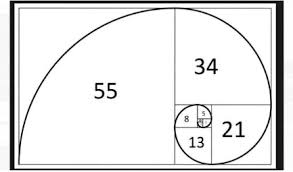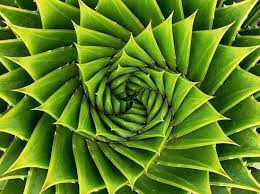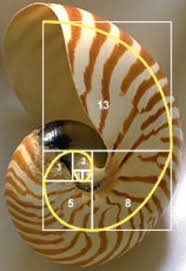The Fibonacci sequence and the golden ratio have been captivating minds for generations due to their fascinating presence in the natural world. Often referred to as phi (φ), these mathematical phenomena seem to govern patterns and proportions in everything from the smallest flower petals to the majestic spiral galaxies. In this article, we delve into the mesmerizing examples of the Fibonacci sequence and the golden ratio in nature, showcasing the innate beauty of mathematics at play.
The Fibonacci Sequence:
The Fibonacci sequence is a series of numbers where each number is the sum of the two preceding ones. It begins with 0 and 1, and the sequence continues as follows: 0, 1, 1, 2, 3, 5, 8, 13, 21, 34, and so on. As the sequence progresses, the ratio of consecutive numbers approaches a value known as the golden ratio.

The Golden Ratio:
The golden ratio, often denoted by the Greek letter φ (phi), is approximately equal to 1.61803398875. It is an irrational number, which means it continues infinitely without repeating. What makes the golden ratio so fascinating is its presence in various natural phenomena, art, and architecture, giving rise to a sense of visual harmony and proportion.
Golden Ratio in Nature:
One of the most mesmerizing examples of the golden ratio in nature is the spiral pattern of a snail’s shell. The nautilus shell, in particular, is a perfect representation of the golden spiral, where each new chamber of the shell is approximately 1.618 times larger than the previous one. This intricate spiral not only provides structural stability to the shell but also reflects the mathematical perfection found in nature.

Flower Petals:
Nature’s floral beauty presents a remarkable pattern in the number of petals of many flowers. Notable examples include lilies, buttercups, and daisies, where the number of petals adheres to the Fibonacci sequence. This arrangement arises from an optimal packing mechanism that allows for maximum sunlight exposure and other essential factors for the flower’s growth.

Seed Heads:
The seed heads of sunflowers and pinecones exhibit alluring spirals associated with the golden ratio. The number of spirals often matches consecutive Fibonacci numbers, illustrating nature’s affinity for this elegant growth pattern.

Pinecones:
Pinecones gracefully display seeds arranged in a spiral pattern. Each cone consists of two spirals, winding in opposing directions. The number of steps along these spirals frequently corresponds to consecutive Fibonacci numbers, underscoring nature’s preference for this mathematical harmony.
Fruits and Vegetables:
The enchanting spiralling patterns observed on pineapples and cauliflower further exemplify the prevalence of the golden ratio in the natural world.
Tree Branches:
Upon close observation of tree branches, one can witness the Fibonacci sequence in action. The main trunk grows until it produces a branch, creating two new growth points. Each new stem then follows this pattern, branching into two more stems, resulting in a harmonious and balanced growth arrangement.
Shells:
The logarithmic spiral, characterized by the golden ratio, manifests itself in the shells of snails and nautilus. This infinite spiral shape represents an exquisite example of mathematical elegance in the natural realm.

Spiral Galaxies:
Notably, spiral galaxies, including our very own Milky Way, exhibit spiral arms at a 12-degree angle, adhering to the Fibonacci pattern. The enigmatic winding problem in their rotation continues to intrigue astronomers, adding to the allure of these celestial wonders.
Hurricanes:
Even powerful weather phenomena like hurricanes demonstrate adherence to the Fibonacci sequence, revealing the underlying mathematical principles in nature’s most potent forces.
Faces:
The golden ratio finds its place in human and nonhuman faces alike. Features such as the mouth, nose, and eyes often align with golden sections of the distances between other features, contributing to perceived facial harmony and beauty.

Fingers:
The lengths of our fingers showcase proportions consistent with Fibonacci numbers, further emphasizing the prevalence of this sequence in the human body.
Animal Bodies:
Various animal bodies, ranging from dolphins to starfish, exhibit proportions that align with Fibonacci numbers, underscoring the universal presence of this mathematical phenomenon in biological systems.
Reproductive Dynamics:
Even honey bees follow Fibonacci in their reproductive dynamics, with the ratio of female to male members in a colony often approximating the golden ratio.
Animal Fight Patterns:
Hawks approaching their prey align their sharpest view at an angle resembling the spiral’s pitch, revealing the golden ratio’s influence in animal behavior’s.
DNA Molecules:
Even on the microscopic level, Fibonacci numbers leave their mark. The measurements of the DNA molecule’s double helix spiral closely adhere to Fibonacci numbers, underscoring the mathematical precision at the most fundamental level of life.
The captivating presence of the Fibonacci sequence and the golden ratio in nature transcends size and scale, manifesting in everything from delicate flower petals to vast spiral galaxies. As we explore these astounding examples of mathematics in nature, we gain a deeper appreciation for the innate harmony and beauty that underpins the diverse creations of the universe. The ubiquity and functionality of the Fibonacci sequence and the golden ratio hint at their fundamental role in shaping the cosmos, leaving us in awe of the exquisite elegance of nature’s hidden mathematics.

